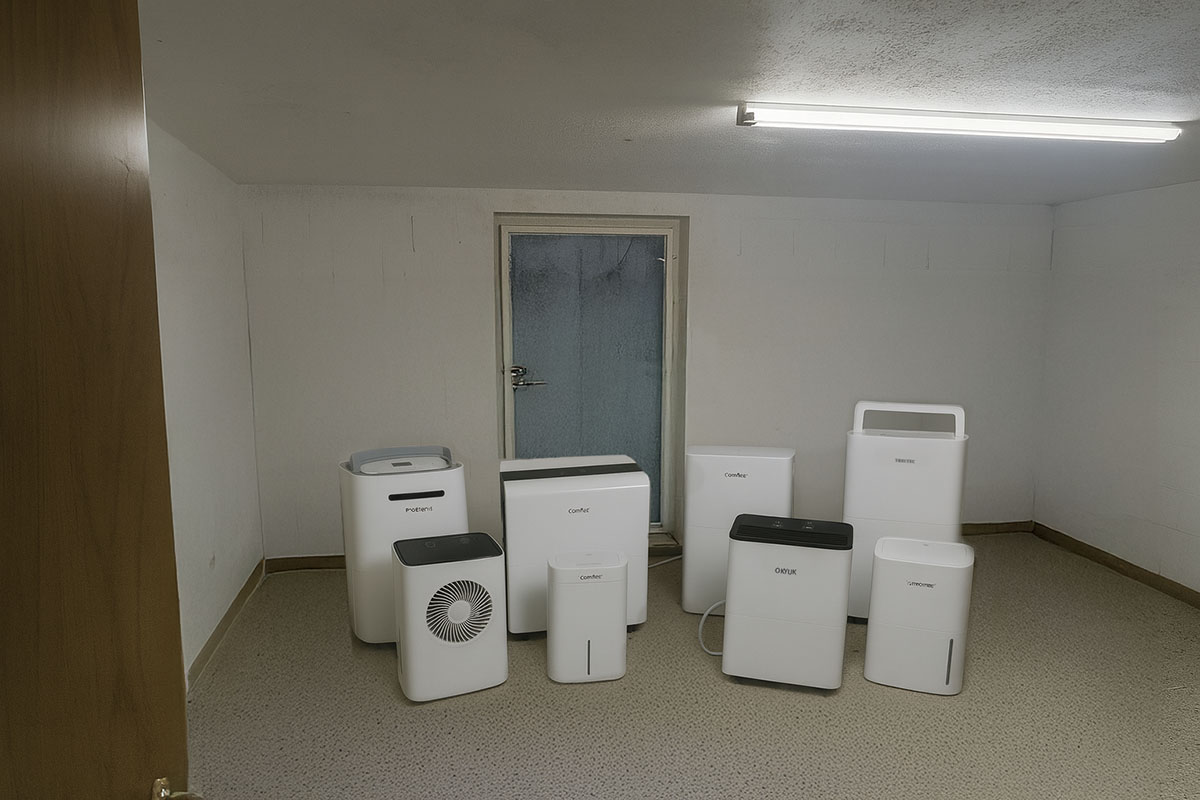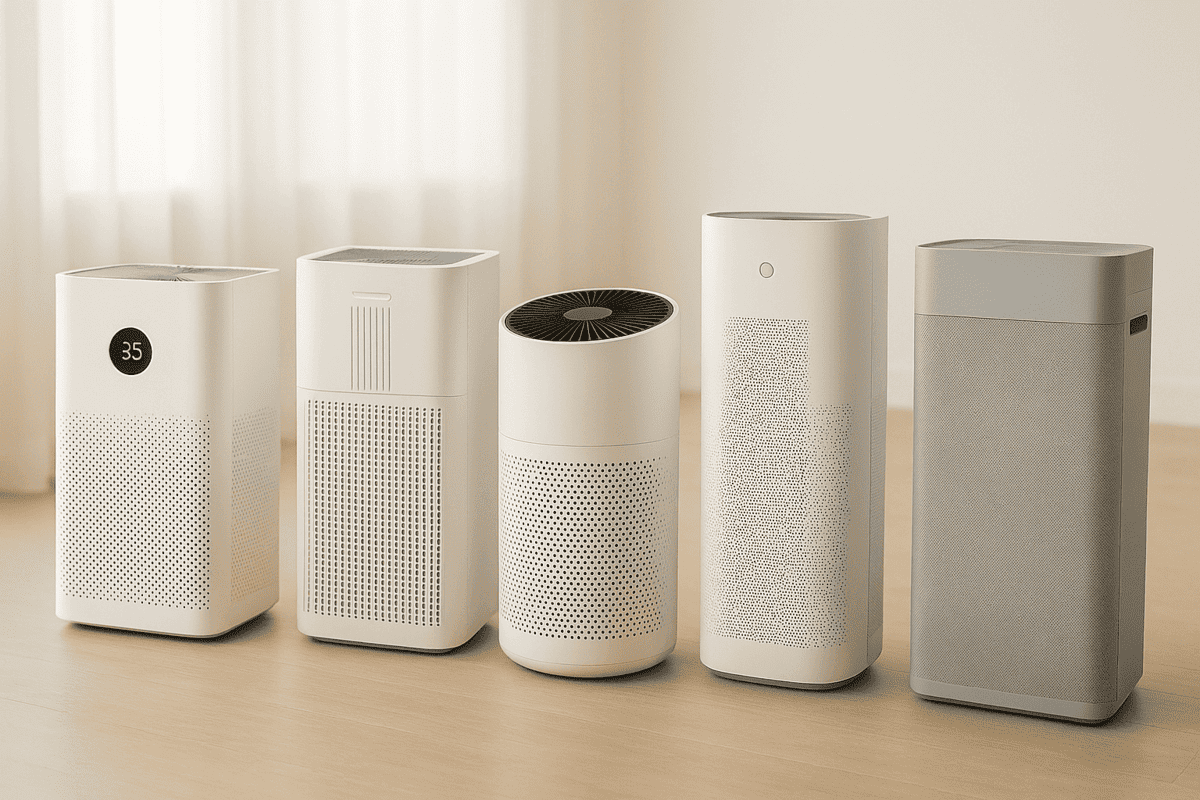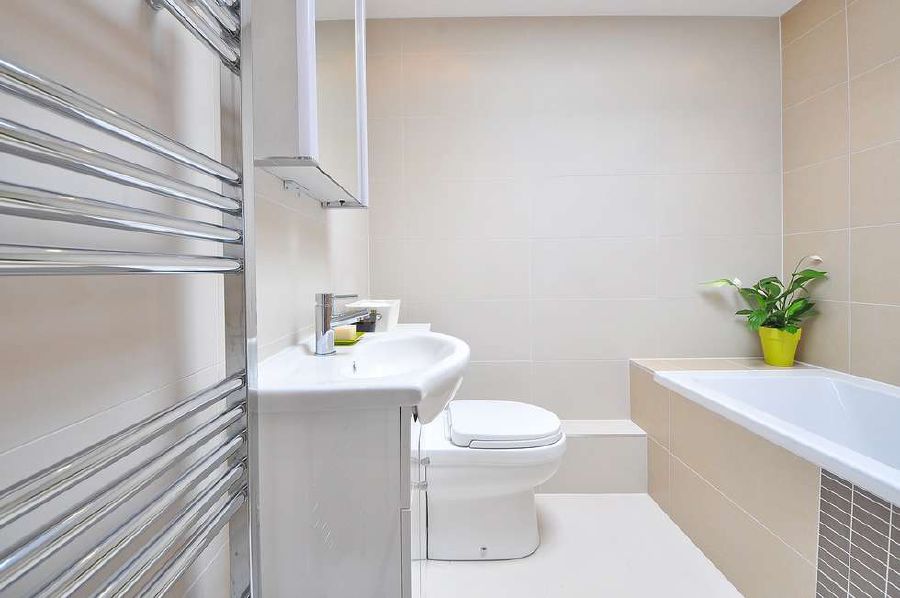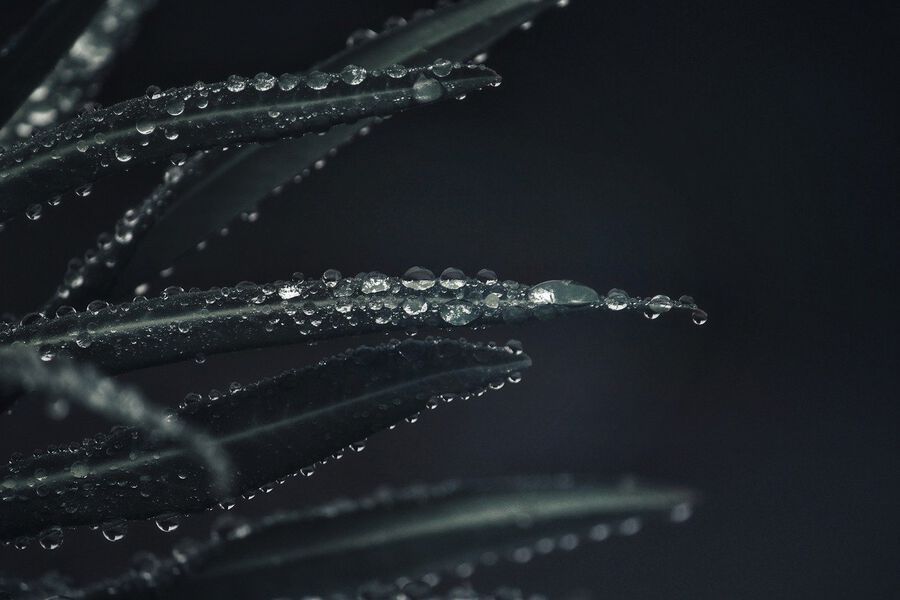Diffuser in comparison: optimally distribute room fragrance
A diffuser is mainly used to Distribute fragrances. The diffuser is used, for example filled with essential oils.
Recommended diffusers
There are several technologies with which scented liquids can be distributed in the room air. The aim is to emit the smallest possible droplets evenly. These droplets are so small that they float in the air and can spread easily throughout the room.
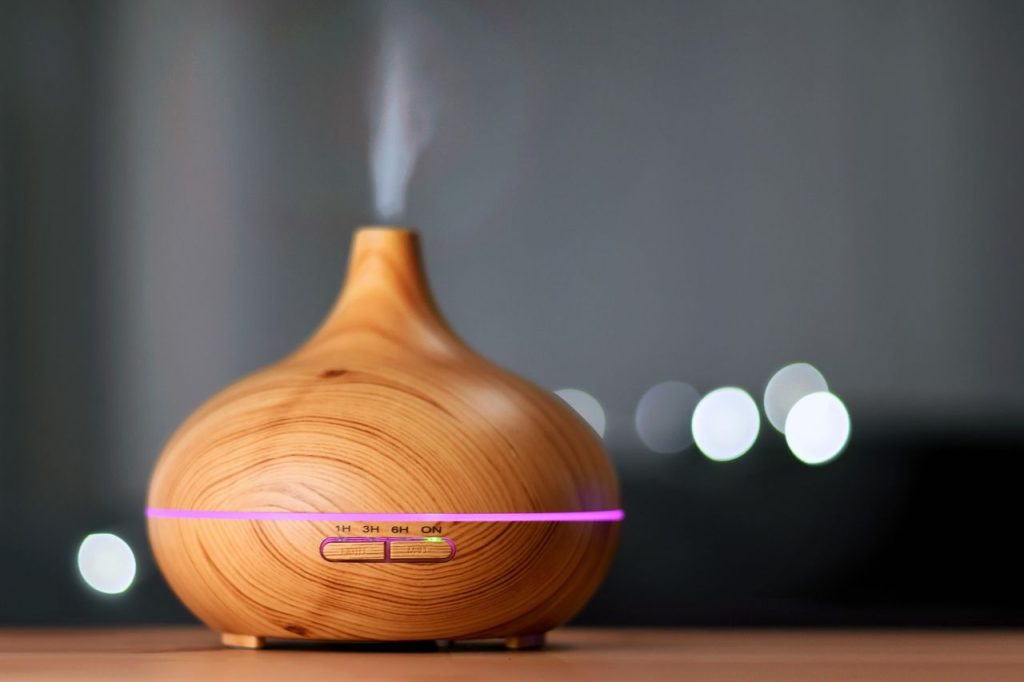
In this article, we take a look at different diffusers and their advantages and disadvantages. We also take a detailed look at how they work.
How a diffuser works
The device is filled with a fragrance - for example an essential oil - and water. It then begins to distribute the filled liquid in the room air over several hours.
The main difference between the diffuser models is the way in which they transform the liquid into small droplets. It is either a vaporiser, an evaporator or an atomiser.
Vaporiser
The vaporiser is rather rare among diffusers. It brings the filled liquid to the Boil. You can imagine it like this like a kettle imagine: When the temperature approaches 100°C, water vapour flows out. And that's what the vaporiser does here.
The disadvantage of this is the relatively High energy consumption. After all, a high temperature must be achieved.
If the vaporiser is to emit fragrance over a longer period of time, quite a lot of water must be filled in. The side effect is a Strong air humidification. Depending on the area of application, this may even be desirable. In a normal private household, the use of a vaporiser is rarely appropriate.
More modern vaporisers do not heat the entire liquid. They gradually pump some of it into an evaporation chamber. This method of operation significantly reduces energy consumption.
Evaporator
In direct comparison to the vaporiser, the evaporator is considerably more energy-saving. The name gives it away: Here the liquid is not heated, it evaporates without the addition of heat.
This favours the Evaporation by distributing the liquid over a large surface. For example, a finely ribbed plate or a porous filter mat. Evaporation is further accelerated by additional rotation.
Depending on the model, an air flow (generated by a small fan) is also used. The strength of the air flow and the rotation speed of the plate determine the evaporation rate.
Evaporation is slower if the room air has a high level of humidity. Compared to the evaporator, this reduces the risk of excessive air humidification
Atomiser
In the main, there are two types of atomisers that can be used in the diffuser. Compared to the vaporiser, both are energy-saving.
The first works with a rapidly rotating disc. The liquid dripped onto the disc is propelled to the sides and hits a Fine sieve. On the other side, tiny droplets come out, which in turn are blown out of the appliance by a fan.
There are also atomisers that work with Ultrasound work. The sound waves atomise the liquid and the droplets are moved away again by a small fan.
How much does a good diffuser cost?
Fortunately, not much. Diffusers are one of the cheaper devices you can use to improve your indoor climate. Serious products start at around €20.
More than €50 is hardly justifiable for a diffuser. Provided it is not a high-end designer model. But models in the stated price range of 20-50€ are already beautiful to look at in my opinion.
Additional functions
As already mentioned, a diffuser is first and foremost there to distribute fragrances. Some models also humidify the air. A diffuser can therefore also be used as a Humidifier can be used.
Most diffusers have a liquid tank with a capacity of less than 500ml. It is therefore not a real substitute for a humidifier, which can release several litres into the room air per day.
At the same time, you should consider whether you want a diffuser with or without a humidifier function before buying. Depending on the humidity in the room, it may not be advisable to add more moisture.
Lighting
Many diffusers have one or more light sources. These are often Energy-saving LEDs. Some models, for example, have an elegant, luminous ring around the centre. Others look almost like a lamp when the light is switched on.
Things get exciting when LEDs with different colours are installed. With such devices, the light colour can either be selected by the user or the device decides on the light colour. For example, by running through the colour spectrum in slow transitions.
Timer
A timer function is always practical. You can use it to determine how long the diffuser should work. The maximum duration depends not least on the capacity of the tank. The timers can usually be set for up to 6 hours.
Purchase criteria
Now that we have highlighted the functionality and possible additional functions, we will briefly summarise the most important purchase criteria:
- Design
- Volume
- Size of the tank
- Energy consumption
- Additional functions
- Cleaning
- Price
Design & materials
The look is a matter of taste. You should pay attention to the materials used. Plastic is rather unattractive; wood and metal, on the other hand, look more elegant and provide a better feel.
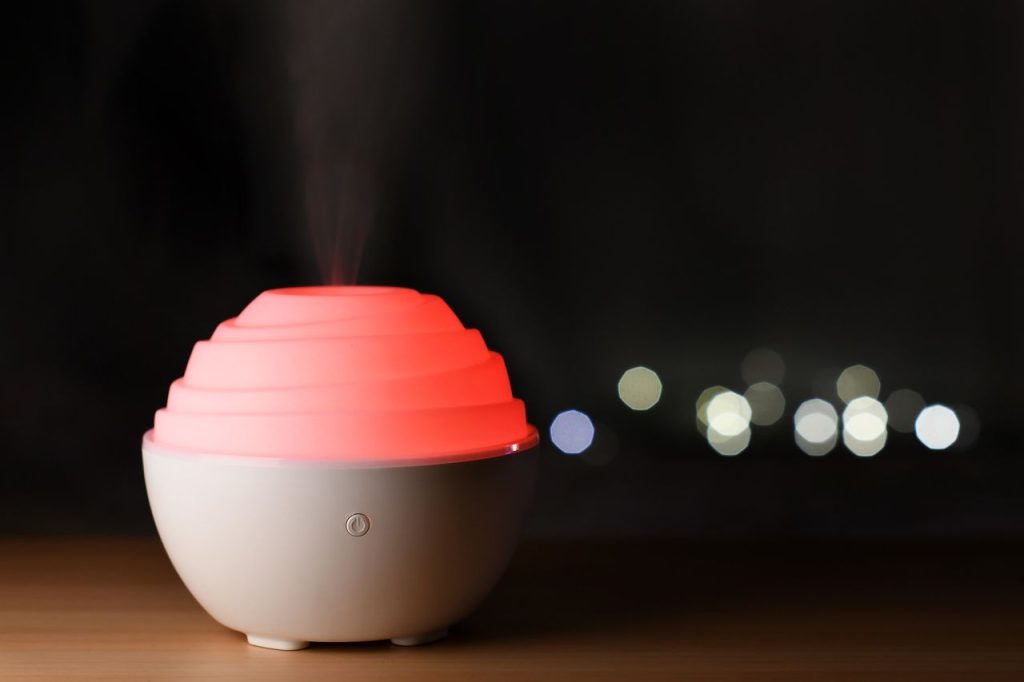
However, plastic is easier to clean. Wood is rather unsuitable near the opening of the diffuser. This is because moisture escapes there, which can damage the wood in the long term.
Volume
As far as volume is concerned, less is more. A diffuser should be as quiet as possible. After all, this is certainly a product that is intended for relaxation and to create a feel-good atmosphere. Both are difficult to combine with a loud humming noise.
Some manufacturers provide specific information on noise development and state the corresponding maximum volume in dB on the product. It should no more than 35db be quiet. If the appliance is also to be used in the bedroom, then a quiet appliance is particularly appropriate.
Capacity
The capacity of the tank is responsible for the maximum running time, among other things. Depending on the capacity, the liquid can be distributed faster or slower. Models that can distribute more quickly and a lot are therefore suitable for larger rooms.
Energy consumption
To keep operating costs low, it is worth purchasing an energy-saving model. Even if the energy-saving product is a little more expensive to buy, it can pay for itself over the years.
You can use the electricity cost calculator to find out whether and when it pays off:
Cost per hour: 0.00 €
Cost per day: 0.00 €
Costs per month: 0.00 €
Costs per year: 0.00 €
How much energy the diffuser consumes depends on the technology used to distribute the liquid. As explained in the section on "How a diffuser works" above, a vaporiser consumes a lot of energy, while an evaporator or atomiser consumes less.
Diffusers that work with vaporisers are quite rare. Models that use one of the other two technologies consume roughly 15 watts.
Additional functions
As described above, many diffusers contain, for example LEDs installed. Although the diffuser cannot replace a bright lamp, it is still pretty to look at.
In my opinion, the more important additional function is the Timer. You can use the timer to determine how long the diffuser should remain active and when it switches off automatically. I would hardly want to do without a timer when buying a diffuser.
Cleaning
Cleaning is easy with most models. The main focus here is on the Liquid container. The liquid should not be left standing around for long. When you refill the diffuser, it is a good idea to leave the container for a short time. wipe out.
Price
The right price depends on the purchase criteria already mentioned. A good diffuser is priced between approx. 20-50€. Depending on the additional functions, capacity and design, it can be more or less.
Recommended diffusers
In this ranking, I have listed diffusers that I think are worth recommending. The selection has taken into account products that deliver a coherent overall picture at a fair price.
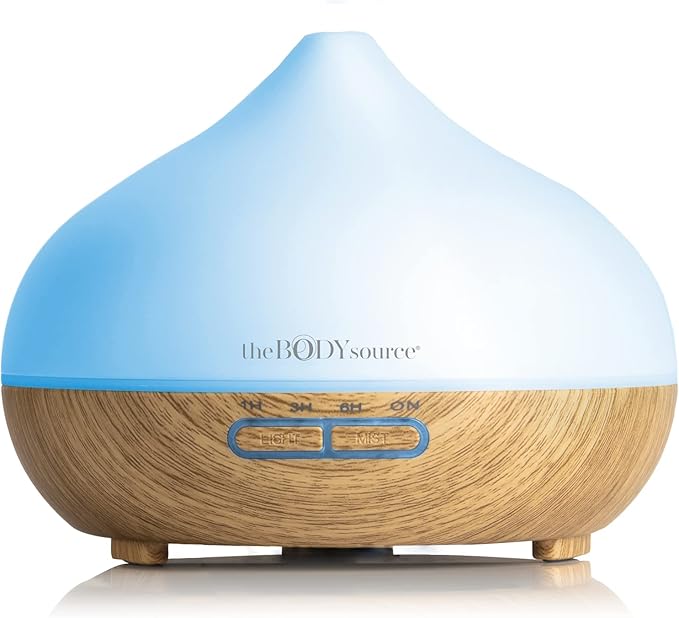
The product name is not particularly attractive. Apart from that, this diffuser is a good overall package. It is visually appealing and has handy dimensions (17 x 17 x 16.5 cm)
The upper half is made of transparent plastic that can light up in the colour of the LEDs. The latter can light up in seven colours.
The Timer can be switched to optional one, three or six hours be set. After this time, the appliance switches itself off. There is also the Continuous operationThe diffuser runs until the liquid tank is empty. The capacity of 300ml enables continuous operation of up to 8 hours.
This diffuser utilises Ultrasound to distribute the fragrance. This is one of the more modern technologies that consume little energy and also work quietly.
With a maximum power consumption of 10 watts the model is relatively energy-efficient. The reason for this is the ultrasonic technology and the energy-saving LEDs.
In my eyes, The Body Source is the price-performance winner in this ranking.
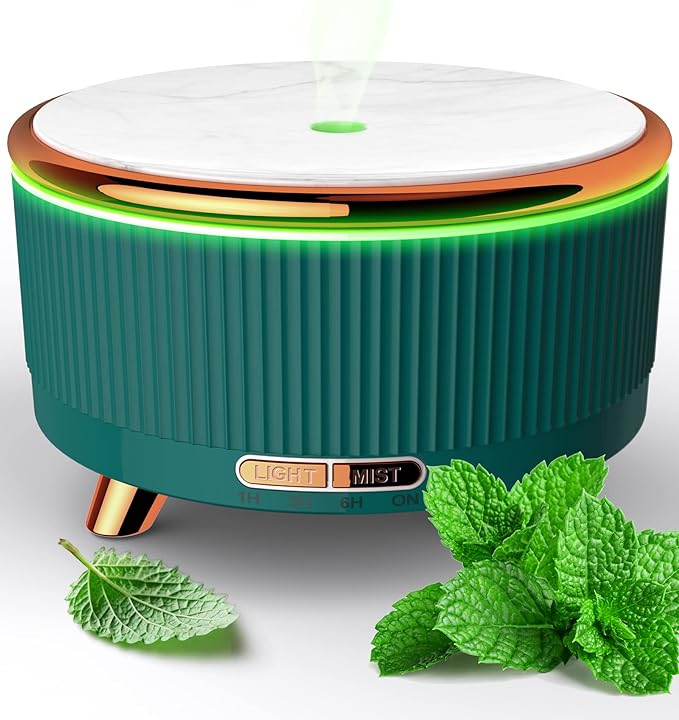
The "Desert" diffuser from the infinitoo brand has a capacity of 500ml. This means that it does not run any longer than the previously presented diffuser. The coverage area reaches up to 480 ft², which can be used in a large room.
The Timer can be reduced to 1, 2 or 6 hours set. Here, too, there is the option of switching the device to the Continuous operation to switch with only 25dB. It then runs until the tank is empty. How long this is depends on the selected intensity level. According to the manufacturer, it is more than six hours.
The coloured LEDs light up a thin strip around the device. In total seven colours are available. The button for the lighting can be used to choose between changing colours, a constant colour or switching the light off completely. In addition, by pressing the button three times, you can change the colour via the Determine brightness.

With this model, the Long running time in the eye. With a maximum of 12 hours it runs around twice as long as other variants. And it holds 400ml.
Only having to refill the device after 12 hours of use is very practical. In my opinion, this device is particularly suitable for use in the workplace. For example, in a spa or a yoga studio. It only needs to be refilled once in the morning and lasts the entire working day.
This model also has a thin, transparent plastic strip, which is covered with LEDs is made to glow. Once again, seven colours are available.
The Timer can be set manually thanks to the app. The diffuser also has the Alexa Home function, which allows it to be easily controlled using Alexa's voice function.
With a Volume of less than 27dB the model is slightly louder than the second place in this ranking.
Conclusion
Diffusers are a good way to evenly distribute fragrances in the room air. They can run for a long time and offer settings for intensity and automatic running time. If LEDs are installed, they also create a relaxing lighting atmosphere in the room.
Depending on the nebulisation technology, the diffuser humidifies the air. In rooms with low humidity, this contributes to a better indoor climate.
Cleaning the diffusers is usually quite simple. Wiping them out after using up the liquid is sufficient in most cases.
The opposite of the diffuser
If you want to reduce the humidity in the room air rather than increase it, then a dehumidifier is what you need:
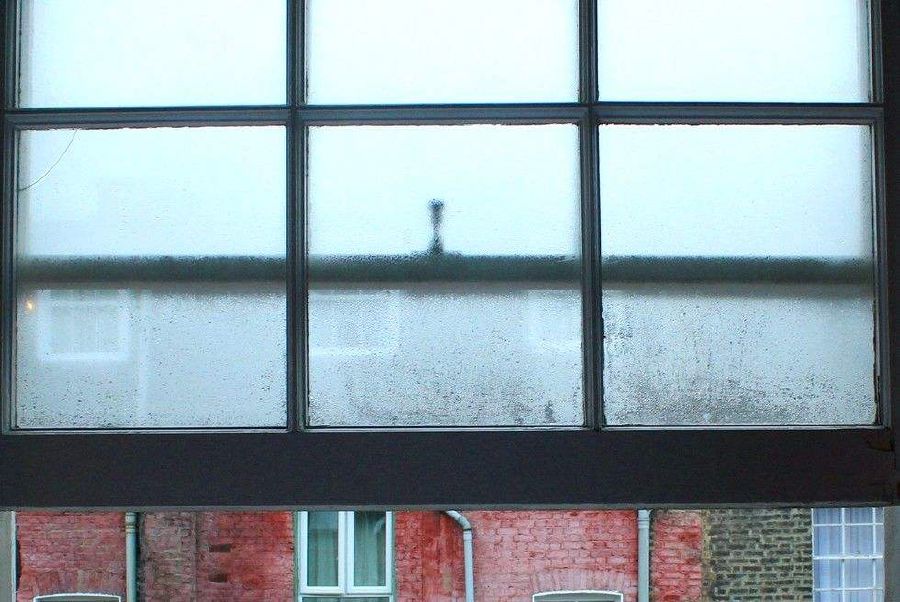
Dehumidifier
Recommended dehumidifiers and the most important purchase criteria.

